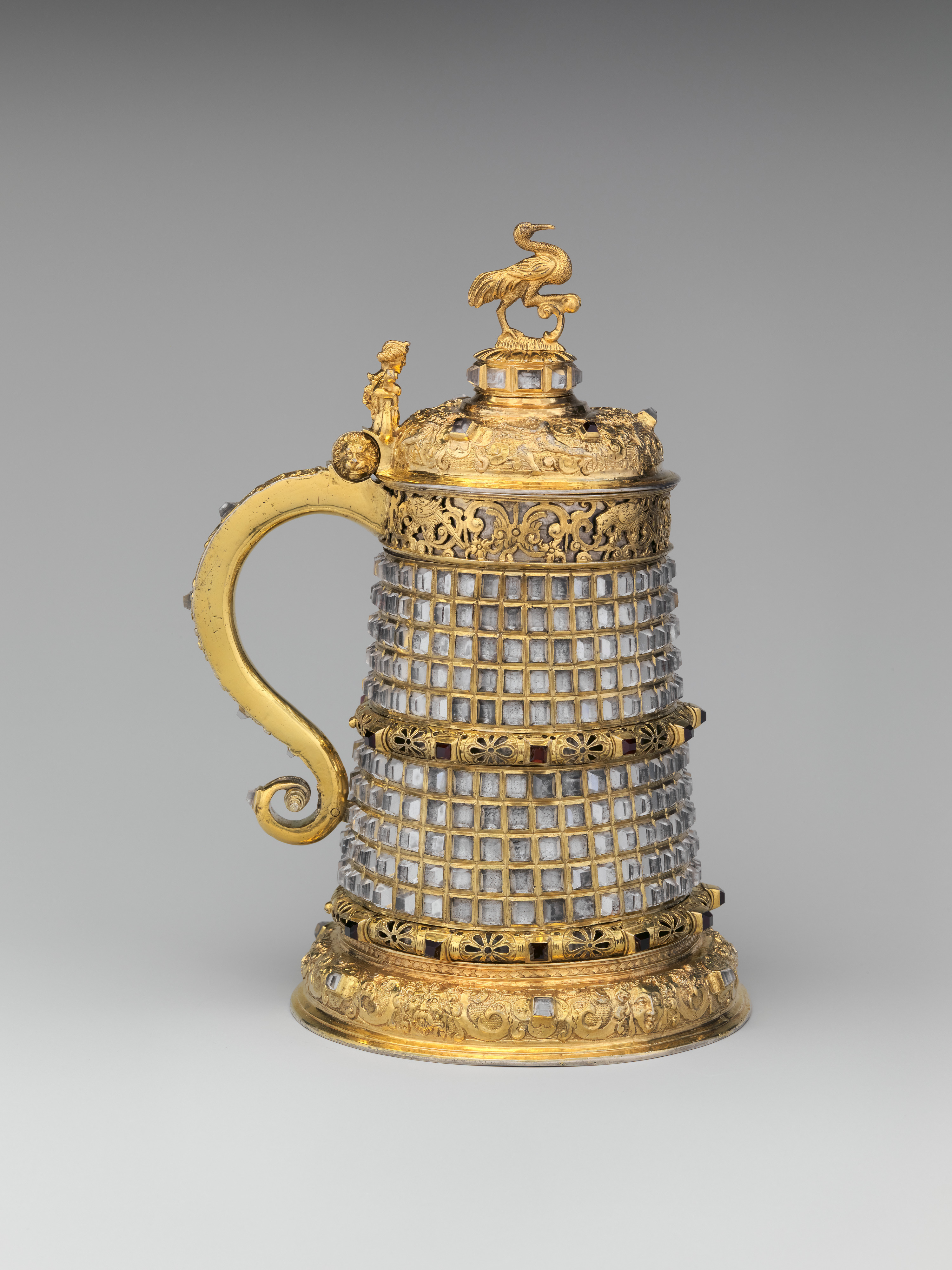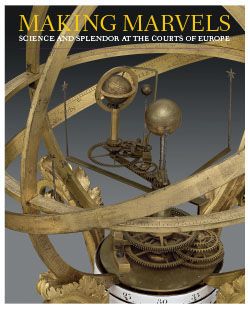Tankard
Bohemian, Prague (Czech Republic)
From the Gothic period to the late Baroque, tankards were a very popular type of vessel in northern European beer-drinking countries. The form was never common in areas that consumed mainly wine.[1] The hinged lid preserved the temperature of the beverage and kept out contaminants such as dust, wig powder, and insects.[2] At the time, gold and gilded objects were associated with radiant light and the comforting warmth of the sun, while the cool shimmer of the silver was likened to moonshine on a clear night, an effect intensified here by the beveled bosses of rock crystal and the reflective silver foil underneath them.[3] Rock crystal, moreover, which the ancient Greeks referred to as ice “frozen so solid that it could never thaw out,” was further believed to attract benevolent spirits.[4]
Works of art incorporating semiprecious stones with apotropaic connotations were usually displayed in the Kunstkammer alongside the unworked and partly refined minerals from which such pieces were made, demonstrating the technical abilities required to master the challenging task of preparing them for mounting.[5] Indeed, this juxtaposition of raw material and finished product was essential to Emperor Rudolf II’s conception of his Kunstkammer.[6] By commissioning exquisitely fashioned objects created from local precious materials, Rudolf sought to honor what were considered to be glorious gifts to humankind from God. These gifts included local stones such as Bohemian agate and sparkling, deep-reddish garnet, which became a “national” gemstone because of its mesmerizing color. At the same time, the emperor was demonstrating the prosperity of his realm, and that appropriate order was achieved through artifice. Rudolf also caused the natural resources in his own country to appreciate in value by commissioning organized mining explorations in all dominions of the Bohemian crown.[7]
On the tankard shown here, complementing the symbolism inherent in the materials, the finial in the form of a crane holding a stone in the claw of its raised foot has a special association with rulership.[8] Since the Middle Ages the vigilant crane has been viewed as a symbol of alertness, a virtue essential to the wise prince on whom the welfare of a state depended.[9]
Footnotes
(For key to shortened references see bibliography in Koeppe, Making Marvels: Science & Splendor at the Courts of Europe: The Metropolitan Museum of Art, 2019)
1. Gruber 1982, pp. 77–81.
2. Koeppe 2016.
3. A related rock-crystal-mounted tankard was presented by King Charles XIII of Sweden to the Swedish Order of Freemasons (Bergroth 2002, p. 69), and a second comparison is documented in the Udo and Mania Bey Collection in Hamburg (Meinz 1966, n.p., no. 20). Virginie Spenlé and Georg Laue in Laue 2017, p. 237, list further examples.
4. Morgan 2008, p. 151.
5. See Pointon 2009, p. 6.
6. Bukovinská 1986, pp. 61–62.
7. Ibid.,
p. 60.
8. Albrecht Dürer included a crane in his design for a helmet for Emperor Maximilian I, on whose Triumphal Arch the bird was also depicted; see S. Cohen 2008, pp. 68–69.
9. Ibid., pp. 68–70.
Due to rights restrictions, this image cannot be enlarged, viewed at full screen, or downloaded.
This artwork is meant to be viewed from right to left. Scroll left to view more.






